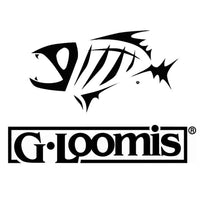How many times have you heard “Where’s your favorite spot to catch big <insert fish name here>”? I’m willing to bet it happens regularly if you’ve been fishing for any length of time. How do you handle these questions?
The fly fishing community is a pretty helpful group and enthusiasts are quite willing to assist a beginner, or someone new to the region just looking to make connections, with tips and tactics. However favorite fishing spots can be some of the most closely guarded secrets regardless of how generous a person might otherwise be. This is especially true if they’ve been burned by someone in the past. I’ve seen guys look at a fellow angler like they just sprouted antlers from their foreheads when they inquire about specific locations and I’ve shared that reaction more than once, truth be told.
Before we get too far down the rabbit hole, let’s keep in mind that public water is just that, PUBLIC. Let’s all stop saying “this is my spot” when it comes to openly accessible waterways. A private stretch of river, a farm pond, or other such body of water someone literally has title to is different because the owner can selectively control who has access and when. For the most part though, water with public access is open to anyone and is considered first come first served.
The next thing we need to consider is that fish move around, whether they’re a migratory species such as tuna, cobia, and tarpon, or relative homebodies like redfish, bass, and freshwater trout. Tide stage, time of year, temperature, wind direction, food presence, shelter availability, water flow and depth, all have an influence on where a fish chooses to be at any given time. Reef inhabitants may be an exception in some respects because they live in such specific habitats for their entire lives. There’s always a pattern to where fish can be found at any given time regardless of species and type of habitat.
Sharing “Your” Spots
So, what is it that makes sharing productive spots such a touchy subject?
Many anglers become protective of the spots they’ve figured out over years and even decades. Ask certain folks where their favorite spot is and you’re likely to get an exceptionally vague answer like “next to an island bordered by deep water.” They’ve unraveled the mystery and can, with regularity, enjoy some measure of success. They just don’t want someone to come in and screw things up.
Besides someone harvesting all the fish, increased fishing pressure is a surefire way to adversely affect fish behavior, and as a result make the fishing more difficult and less productive. It’s really a simple matter of too many humans invading a fish’s personal space on a regular basis. Their lateral lines give them an unequaled ability to sense motion, vibrations and pressure changes while their finely tuned hearing and the sound-carrying quality of their habitat allows them to pick up sounds from unbelievable distances. Anything foreign or out of the norm causes them to be jumpy, nervous, and harder to approach. Just imagine your peaceful residential road being turned into a six-lane highway overnight. You’d be jumpy and irritable too.
So how well do you know the person you share your secrets with? What kind of angler are they? Are they going to share your information with two or three friends who will then pass it on to three or four more? It’s a slippery slope some people don’t want to go down, and for some very valid reasons.
Learn the Pattern
Asking for a specific fishing spot is the wrong approach. Anglers are better served in the long run asking questions like “What type of cover should I be looking for to catch redfish this time of year? Does the cold water make the fish move to different sections of the lake? Can you recommend some flies that might work this time of year?”. The angler is bound to get more useful and in-depth information that will serve them better over time.
In the long run, fly anglers should learn to fish the pattern rather than specific spots. Tournament bass anglers are prime examples of people who follow this edict. They have, out of necessity, learned to understand patterns and are able to reliably find fish in a variety of locations across the country. They’ve already considered the time of year, water conditions, and fish habits before ever pushing their throttle forward on the way to the first spot.
Rather than ask others for specific spots, spend a little time finding new spots on your own. There are a vast number of resources available to an angler looking for a productive location. Google Earth, state wildlife conservation websites, clubs, outfitters, retail shops, Facebook, Instagram, and even Wikipedia can all be valuable resources if you know how to look for the information. Gathering knowledge on a fishery should be part of the experience and only increases the satisfaction when things fall in place.
And I don’t know anyone that would go so far as to doctor a photograph just to keep their secret spot a “secret.”















Comments